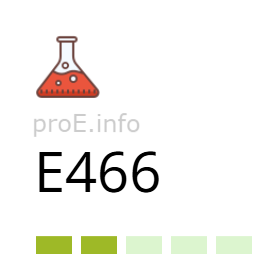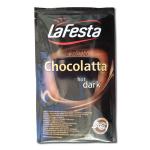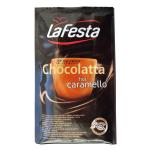
Other names for the additive (synonyms)
General Information
Sodium carboxymethyl cellulose (food additive E466) is a colorless amorphous substance, a weak acid, and chemically a high-molecular ionic electrolyte. In the food industry, it is primarily used as a thickener, emulsifier, and stabilizer in the form of the sodium salt of carboxymethyl cellulose.
Carboxymethyl cellulose (CMC) was first synthesized in the early 20th century. In 1918, German chemist Fritz Sturmann patented a process for producing CMC. The idea was to chemically modify natural cellulose by introducing carboxymethyl groups, significantly improving its solubility and functional properties.
Since then, the production technology has been continuously improved, and CMC has found widespread application in various industries, from textiles to food and pharmaceuticals.
Today, sodium carboxymethyl cellulose is produced by reacting monochloroacetic acid with alkyl cellulose, which is obtained from cellulose and caustic soda.
E466 dissolves well in water, has no odor, and is non-toxic. Sodium carboxymethyl cellulose is resistant to degradation under bright light and is insoluble in vegetable and animal fats.
Effects on the Body
Benefits of additive E466
Food additive E466 has low acute toxicity. Although sodium carboxymethyl cellulose is used as an excipient in pharmaceutical preparations and food products, E466 itself does not provide any direct health benefits.
Risks of additive E466
According to EFSA, sodium carboxymethyl cellulose is not absorbed in the human gastrointestinal tract and is excreted unchanged. Studies have shown that additive E466 may affect gut microbiota, induce inflammatory processes, obesity, and impair glycemic control in animals.
It is known that improper manufacturing practices (e.g., overdose) of sodium carboxymethyl cellulose (E466) can cause digestive disorders.
Human studies have shown that intake of up to 6 g of sodium carboxymethyl cellulose per day over 8 months was well tolerated, including by patients with diarrhea and constipation.
EFSA noted that additive E466, like other emulsifiers, may alter gut microbiota composition, promote inflammation, and cause metabolic disturbances. However, these effects are not standard endpoints in toxicological assessments and require further investigation.
The EFSA Panel concluded that there is no need to establish a numerical Acceptable Daily Intake (ADI) for sodium carboxymethyl cellulose (additive E466), as consumption of up to 660–900 mg/kg body weight per day does not pose a health concern.
Uses
Food additive E466 is used as a texture stabilizer, thickener, and encapsulating agent. The primary property of sodium carboxymethyl cellulose is its ability to form a viscous colloidal solution that retains its properties for a long time.
Additive E466 is applied as a thickener in the production of ice cream, cottage cheese masses, mayonnaise; as a texture regulator in desserts, jellies, creams, and pastes; and in protective coatings for fish, meat, and confectionery products.
Other applications of sodium carboxymethyl cellulose include:
- in medicine — for the production of laxatives;
- in the manufacture of household chemicals and cosmetics (shampoos, shaving creams, hair care products, etc.).
Legal Status
Additive E466 is approved for use in food products in the EU under Annexes II and III of Regulation (EC) No 1333/2008. The additive is also permitted in Ukraine, Canada, the United States, and most other countries worldwide without a specified Acceptable Daily Intake.



